#165: Fistulina hepatica, the Beefsteak Fungus
Fistulina hepatica is a very unusual polypore that is easy to recognize: it looks (and somewhat feels) like a large tongue growing from the side of a tree. This edible mushroom is distinctive because of its bizarre pore surface. When young, the pores are little more than multicolored bumps. As the mushroom matures, the pores develop into individual tubes, like a collection of straws. Its unique, meat-like color and texture earned F. hepatica the common names “Beefsteak Fungus” and “Ox Tongue Fungus.”1
Description
F. hepatica fruits from the sides of dead trees and forms irregular, fan-shaped brackets. The mushrooms are attached at a single point and grow outward, making them roughly semicircular in appearance. At the edge of the mushroom, small lobes often form that make the mushroom’s outline irregular. Multiple mushrooms often sprout from the same place and grow shelf-like or overlap and fuse with one another, distorting their appearance. The mushroom grows 7 – 30cm in diameter and 3 – 6cm thick, so some specimens get quite large. When fully grown, the mushroom is often shaped roughly like a liver or large tongue (thus the common name “Ox Tongue Fungus). F. hepatica produces a pileus that is reddish-orange to red and may be a deep red reminiscent of the color of liver. The pileus is smooth, velvety, or slightly bumpy in texture. Thanks to its size and color, the Beefsteak Fungus looks for all the world like a slab of meat stuck to the side of a tree. 1,2,3
The most remarkable feature of F. hepatica is its very unusual pore surface. When young, the underside of the mushroom is creamy white with orangish to pink to red polka-dots. At this stage, the surface is rough in texture because it is completely made up of evenly spaced but unorganized bumps. The bumps are all different sizes and the largest bumps sport the darkest colors. If you look very closely (try using a 10x or higher magnifying glass), you can see a small dot at the center of each bump. This dot is the newly forming pore and the bump will eventually elongate to become a tube.
As the pores start to grow, the hymenium becomes much more even in color and texture. The mature pore surface is whitish to yellowish to pinkish and features pores that are all the same length (up to 1.5cm). When injured, the pores bruise reddish-brown. If the mushroom gets old, the will start to turn reddish-brown. The pores deposit spores that are light pinkish to pinkish to pinkish brown. 1,3
The most interesting part of the pore surface is that each pore is separate from the others. Most polypores produce pores embedded in a continuous surface. F. hepatica does something different: it produces lots of tiny, distinct cylinders that each have a single, central pore. 1,2 This arrangement is reminiscent of a bunch of tightly packed straws. The easiest way to confirm that the pores are separate is to look through a magnifying glass at the pore surface as you bend the mushroom. Bending the mushroom causes the pores to jostle around and even pull apart from one another.
The Beefsteak Fungus usually grows in a shelf-like arrangement without a stipe, but a short, lateral stipe can form when the mushroom fruits on top of a flat surface. 1 When present, the stipe is generally 2.5 – 7.5cm long. 2 I have seen this twice: once when the mushroom was fruiting from mulch and again when it sprouted from the ground inside a hollow tree. Most field guides do not describe the stipe, since the mushroom usually lacks one. However, the first time I found F. hepatica it did have a stipe and that confused me for a long time. I therefore feel it is necessary to provide a description.
F. hepatica’s stipe looks a lot like the young pore surface in both texture and coloration. Instead of pores, the stipe is covered in evenly-spaced, conical bumps of varying sizes. This gives the stipe a rough texture that somewhat reminds me of a cucumber. The largest bumps are deep red, the medium-sized bumps are pinkish, and the smallest bumps are off-white to creamy tan. Underneath, the color of the stipe surface is about the same as the main pore surface color. The background color of the stipe becomes paler toward the base. In older specimens, a crease forms between the stipe and pore surface that makes it easy to distinguish between the two areas.
The first time I found this mushroom, it was growing in mulch and as a result it had a well-developed stipe. Thanks to its unusual habitat and morphology, the identification key I was using simply could not place the mushroom correctly. It was over a year before I found a normal specimen and was able to identify it and my earlier collection as F. hepatica. Since the Beefsteak Fungus is such an unusual polypore, identification is greatly simplified after you have seen the mushroom in person at least once.
The Beefsteak fungus has soft, watery flesh that exudes a reddish liquid when pinched. Inside the mushroom, the flesh is whitish but contains many reddish streaks. These features make the mushroom look and feel like a slab of marbled meat. Its taste, however, is mild or a bit acidic to sour. 1
Ecology
F. hepatica decomposes dead trees and is sometimes weakly parasitic on living trees. The mushroom most often grows on oaks and chestnuts, but sometimes attacks the wood of other hardwoods as well. It usually appears on recently dead trees, so look for it especially at the bases of dead but still standing trees. 1 F. hepatica may also produce mushrooms on stumps or logs of recently downed trees. 2 As I noted above, I have found it growing in mulch, although that was a rare occurrence. The fungus is a brown rot fungus, 1 so it primarily decomposes the wood’s cellulose (for more on types of rot, see FFF#088).
The Beefsteak Fungus lives in both Europe and North America. 3 Within North America, the mushroom’s range is primarily Eastern North America, but mushroom hunters in Texas and California can also find it. F. hepatica mushrooms appear from summer through fall. 1 November is the tail end of the Beefsteak Fungus’ fruiting season, 2 but Eastern North America’s recent bout of warm weather means residents may yet be able to find some this year! Now, if we could only get some rain…
Edibility
The Beefsteak Fungus is notable as one of the few mushrooms that you can eat raw. Its flavor is a combination of “polypore flavor” and an acidic or citrus flavor. The balance of these two flavors varies between mushrooms, so some taste more like polypores while others taste more citrusy. F. hepatica is a little firmer than what people expect from mushrooms, which adds some textural interest to dishes.
In my area, most people prefer to eat the mushroom raw, perhaps as a garnish on salads. The mushroom is usually prepared by cleaning off any dirt, cutting away bad areas, and then slicing it into thin pieces.
In other places, F. hepatica is cooked first to make sure it is tender enough to eat. 3 When cooking with this mushroom, the acidic taste of the Beefsteak Fungus is generally undesirable. Since the mushroom develops more acidic and sour flavors with age, younger specimens are preferred. 4 The juice of older specimens can also cause gastric upset, so it is recommended that you soak older mushrooms overnight and discard the water before eating them. 5 To dilute the acidic taste, the Beefsteak Fungus is often cooked in creamy dishes or with other mushrooms. 4
Taxonomy
F. hepatica is not placed with the core group of polypores (order Polyporales). Instead, it belongs to the order Agaricales, which contains the majority of gilled mushrooms. 6 The straw-like pore surface is characteristic of the genus Fistulina and closely-related genera. If your mushroom has individual pores but does not quite fit the description above, try matching it to other mushrooms in the genera Fistulina and Pseudofistulina. 1 Fistulina translates to “with small, hollow tubes,” which refers to the mushroom’s straw-like pores. The name hepatica is derived from the Latin word for “liver,” a reference to the mushroom’s liver-like color and texture. 2
| Kingdom | Fungi |
| Phylum | Basidiomycota |
| Subphylum | Agaricomycotina |
| Class | Agaricomycetes |
| Subclass | Agaricomycstidae |
| Order | Agaricales |
| Family | Fistulinaceae |
| Genus | Fistulina |
| Species | Fistulina hepatica (Schaeff.) With. 7 |
See Further:
http://www.mushroomexpert.com/fistulina_hepatica.html
http://www.messiah.edu/oakes/fungi_on_wood/poroid%20fungi/species%20pages/Fistulina%20hepatica.htm
Citations
1. Michael Kuo. Fistulina hepatica. MushroomExpert.Com (2004). Available at: http://www.mushroomexpert.com/fistulina_hepatica.html. (Accessed: 4th November 2016)
2. Gary Emberger. Fistulina hepatica. Fungi Growing on Wood Available at: http://www.messiah.edu/oakes/fungi_on_wood/poroid%20fungi/species%20pages/Fistulina%20hepatica.htm. (Accessed: 4th November 2016)
3. Pat O’Reilly. Fistulina hepatica, Beefsteak Fungus. First Nature Available at: http://www.first-nature.com/fungi/fistulina-hepatica.php. (Accessed: 4th November 2016)
4. Beefsteak Fungus. WildFoodUK Available at: http://www.wildfooduk.com/mushroom-guides/beefsteak-fungus-mushroom/. (Accessed: 4th November 2016)
5. Miller, O. K. & Miller, H. North American mushrooms: a field guide to edible and inedible fungi. (Falcon Guide, 2006).
6. Michael Kuo. Mushroom Taxonomy: The Big Picture. MushroomExpert.Com (2014). Available at: http://www.mushroomexpert.com/taxonomy.html. (Accessed: 4th November 2016)
7. Fistulina hepatica. Mycobank Available at: http://www.mycobank.org/Biolomics.aspx?Table=Mycobank&MycoBankNr_=193923. (Accessed: 4th November 2016)

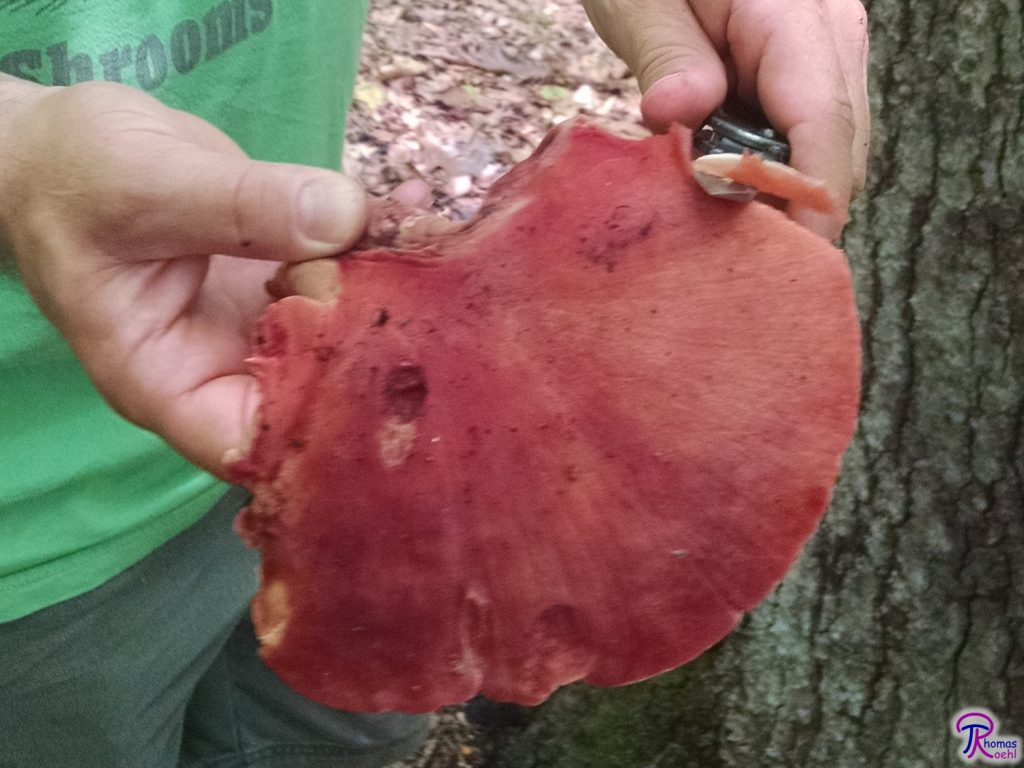
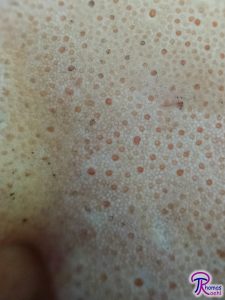
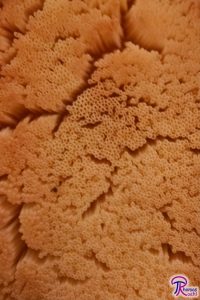
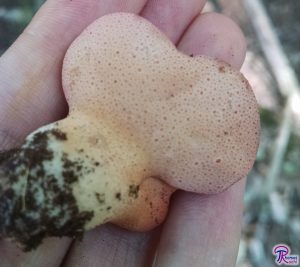
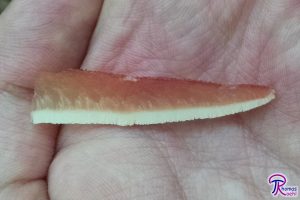

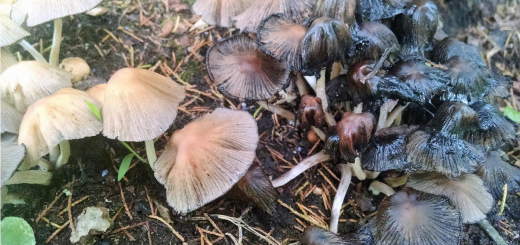





![#011: Characteristics of Kingdom Fungi [Archived]](https://www.fungusfactfriday.com/wp-content/themes/hueman/assets/front/img/thumb-small-empty.png)

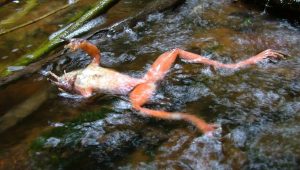
3 Responses
[…] happened because someone mistook H. nidulans for the Beefsteak Fungus (Fistulina hepatica, FFF#165).6 These two mushrooms are theoretically easy to tell apart based on their descriptions. Pay […]
[…] last, interesting variation on pores is demonstrated by the Beefsteak Fungus (Fistulina hepatica FFF#165). This mushroom and other related species have separate, closely-packed pore tubes. Imagine a […]
[…] cap, white pore surface, and stains brown when touched. Fistulina hepatica (the Beefsteak Polypore, FFF#165) is also similar in shape, but it has a reddish pileus, softer texture, a unique pore surface, and […]